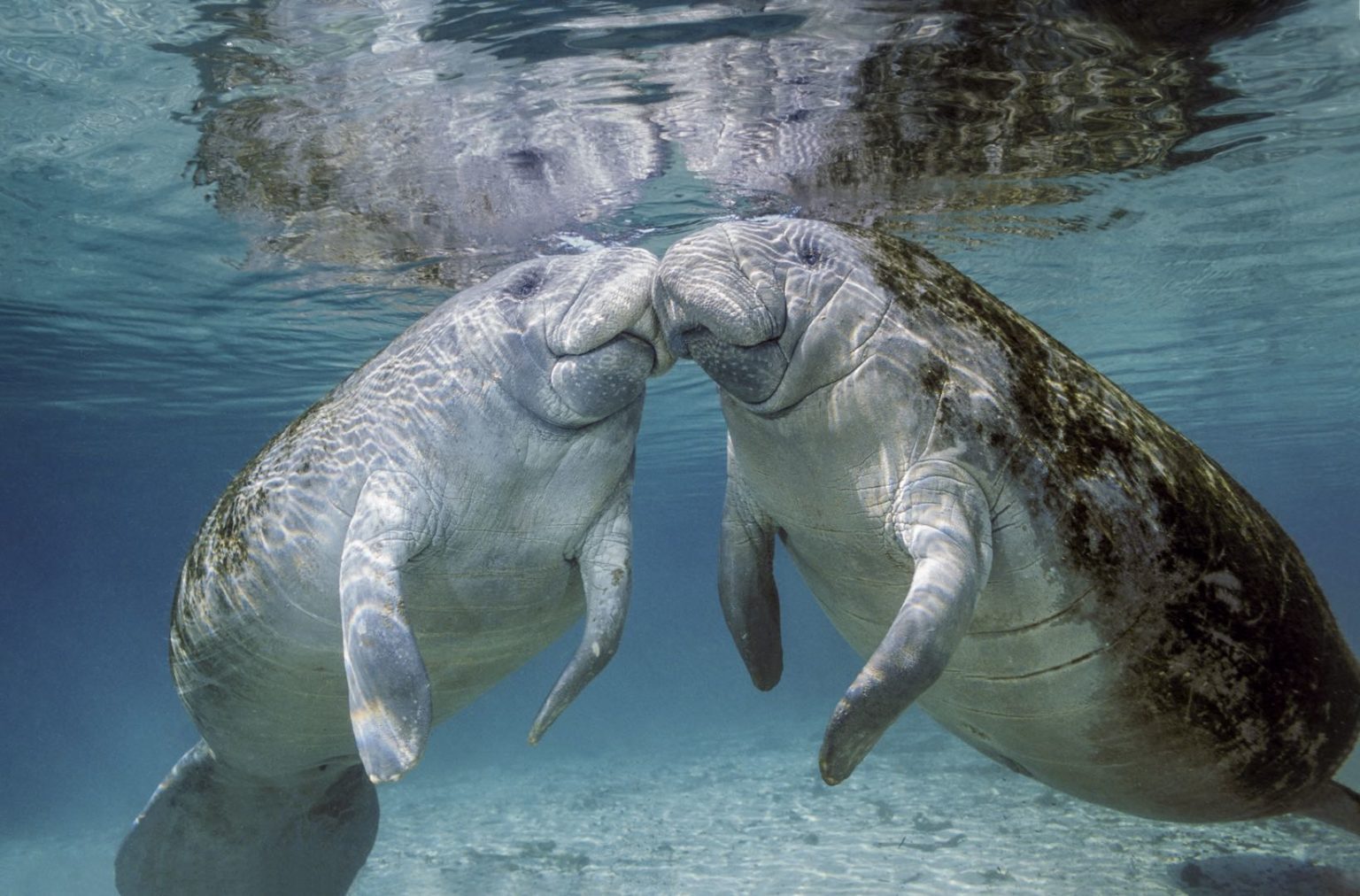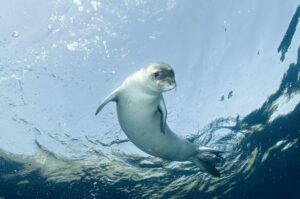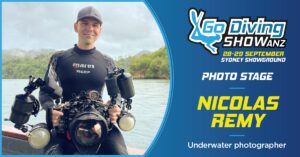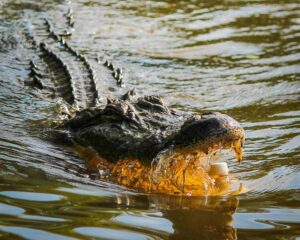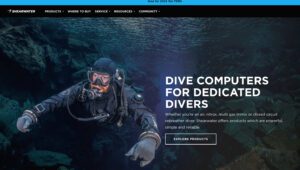David Jones is entranced by the manatees of Crystal River, and says it is an experience that everyone should have at least once in their life
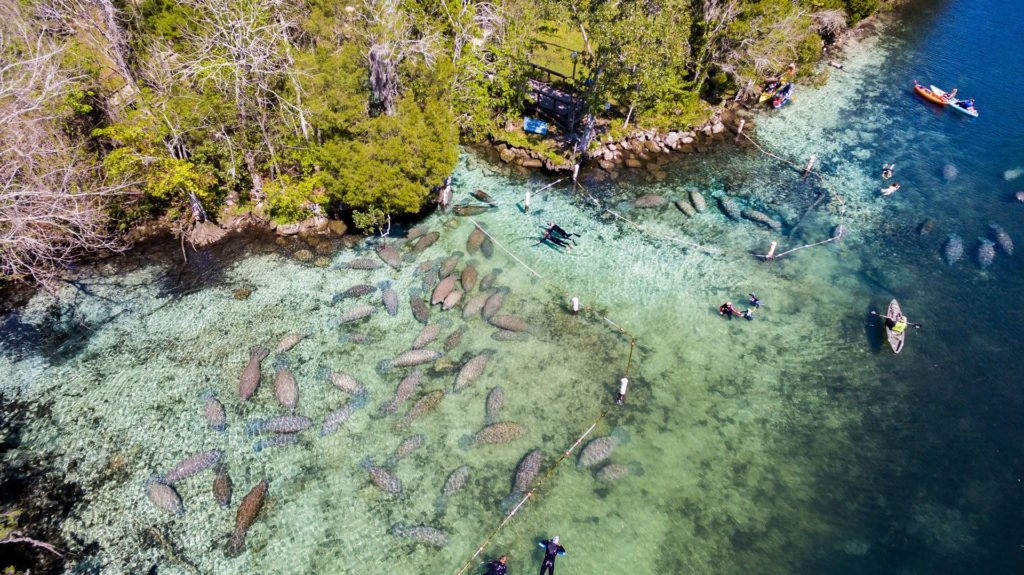
Photographs by David Jones and Walt Stearns
Florida – it truly is the place of ‘things to do’. You only have to type it into Google and you’re instantly inundated with fun facts, figures, images and tempting offers to visit the Everglades, the Kennedy Space Center, the sandy beaches and, of course, a plethora of amusement parks all vying for your patronage. Surprisingly what didn’t appear on Tripadvisor’s top ten attractions was swimming with manatees, but that was what I decided to do when a short business trip to Orlando presented me with the opportunity.
With very little time available, I decided to skip the Magic Kingdom and jumped into my hire car at the airport for the two-hour drive to Crystal River. As I left the outskirts of the big city and Mickey Mouse finally disappeared in the rear view mirror, the roads became quite empty and even though it was dark outside, I couldn’t fail to be struck by how flat and wet the whole place was. It’s worth remembering that Florida was once an enormous coral reef and that deep below the limestone crust, water freely flows through thousands of miles of channels and tunnels.
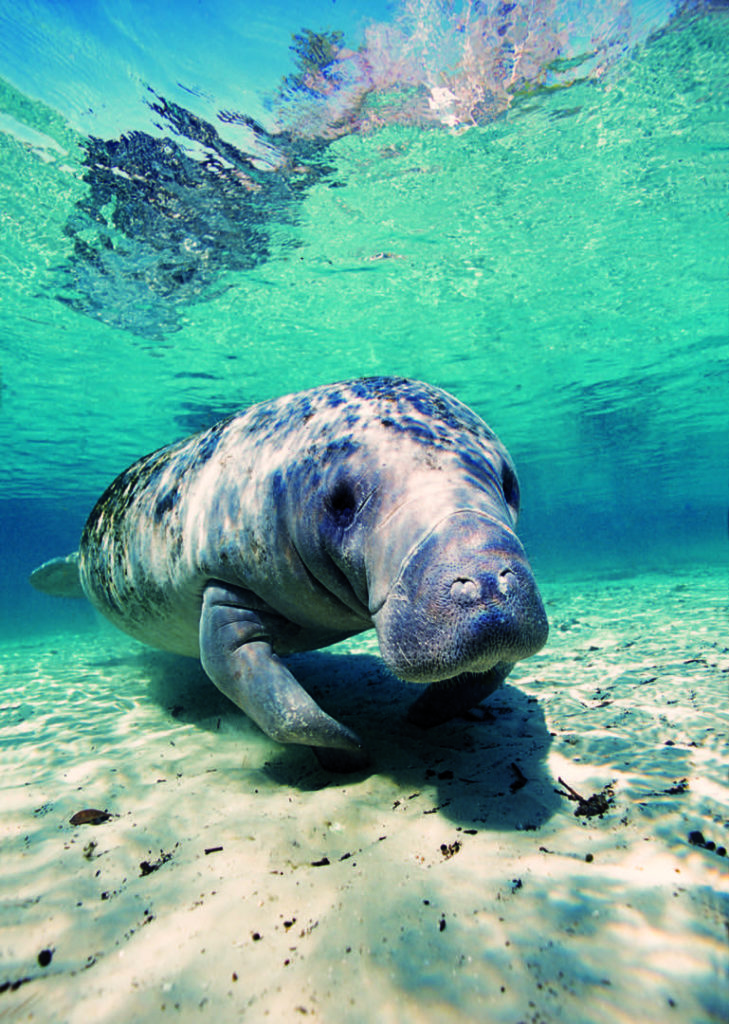
This is the Floridan aquifer, vast stores of fresh water that has been collecting underground for thousands of years. When the limestone erodes, potholes can form, often becoming lakes, while channels erupt on the surface as springs. The consistent temperature and reliability of this water source is what attracts the manatees to the area, particularly in the winter months. For most of the year, the Florida manatees, which are a sub-species of the West Indian manatee, are dispersed around the coastline and its numerous estuaries and rivers, but as the weather cools they congregate, sometimes in large numbers, around the warmer water provided by the springs.
Anyway, back to the trip, and it’s not long after you leave the airport parking lot before you start to see Manatees. No, not in the rivers, or lakes at the side of the road, but on the billboards. Manatees are clearly big business in Florida and the closer you get to the areas they are found the more advertising there is. They are also the Florida State’s ‘marine mammal’ of choice, although if I’m being honest I’m struggling to think what else they might have picked.
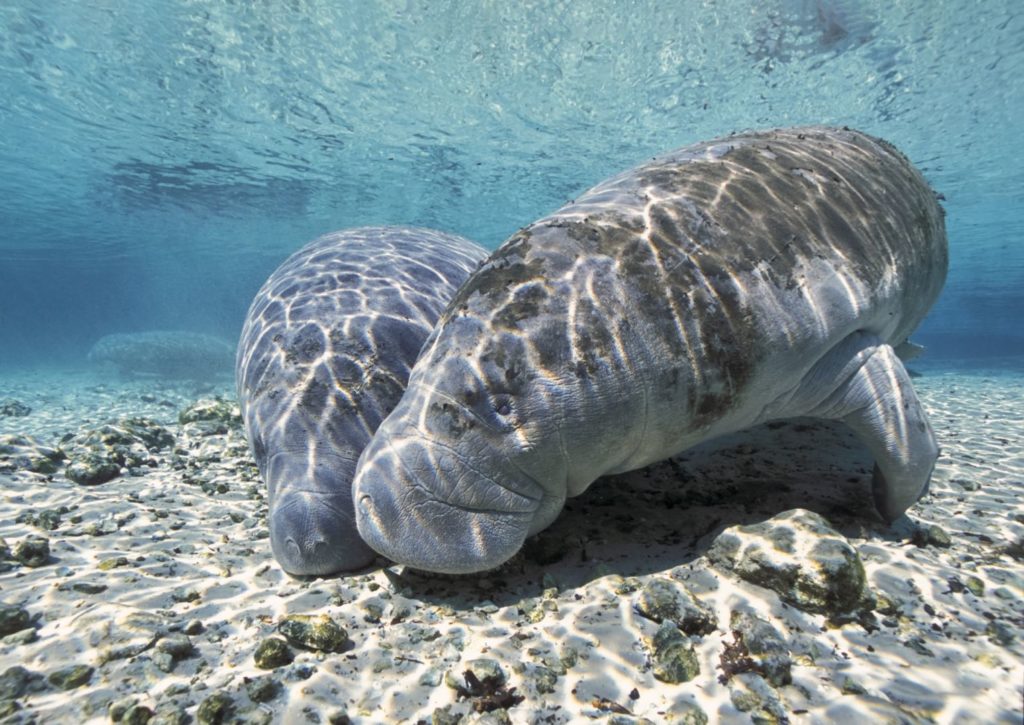
Arriving quite late at night in the small town of Crystal River on the West Coast I checked into the reasonably priced Best Western and with restaurants closed, ‘dined in’ from the selection of goodies available from the hotel lobby vending machine. By now, the number of manatee billboards had grown exponentially and I suddenly realised that I had become unwittingly immersed in the whole manatee experience. Everywhere I looked I was surrounded by manatees.
Shop windows were festooned with manatee products. There were manatee lights, manatee T-shirts, even manatee snow globes, the irony of which was not lost on me as I sat in shorts and T-shirt nibbling my rather unsatisfactory snacks while the drone of air-con reminded me that this was still a sub-tropical part of the country. As I climbed into bed surrounded by leaflets about… yes, you guessed it, manatee trips, I set my alarm clock and settled down for a couple of hours sleep – no doubt dreaming about manatees…
To get the best chance of seeing manatees, you have to go in the winter and you have to get up early – and boy, was this early! Once the sun comes up and the waters get warmer, the animals will spread out and move away from the springs, but when that alarm went off at 4am after only three hours of sleep and with my body still struggling to get over the flight and drive from the day before, I seriously started to question my decision to go for the early morning boat trip option. Those doubts faded away when on the short drive to my boat I diverted through a well-known fast food store that was open 24/7 for something vaguely resembling sausage and egg in a bun (how did I miss it the night before?). All was good in the world again.
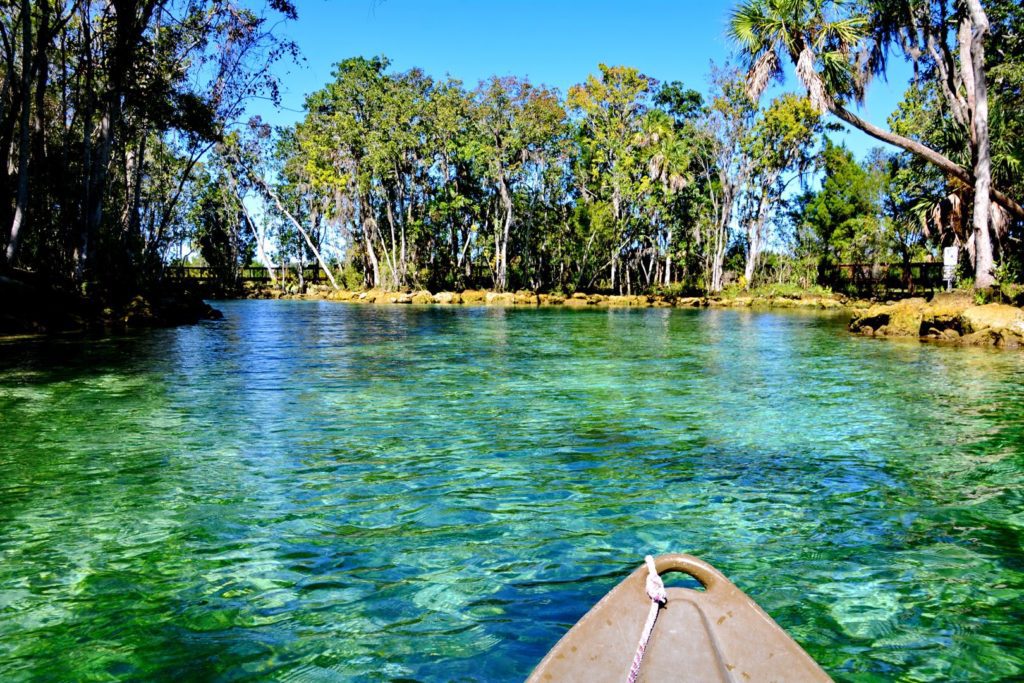
I had chosen to join Birds Underwater Manatee Dive Center for my manatee experience. There were plenty to choose from and they all look very professional, but perhaps I was swayed by the fact they had been operating for over 30 years and that they had enough positive reviews on Tripadvisor to make any business owner seethe with jealousy. It was still dark when I and the other half dozen or so excited participants rocked up to their dive center, only to be surrounded, yet again, by even more opportunities to make a purchase of something in the image or shape of a manatee. This animal was starting to feel like the biblical golden idol of the West Floridians.
As a National Wildlife refuge and a State Park, the Crystal River area is highly designated and regulated, so the first order of business when we arrived was a thorough briefing about what we could and couldn’t do. This was followed by another televised version of the rules just to reinforce the point, but to be fair the images also served to increase the excitement of the assembled observers in the room. Once that was done equipment was issued. I had taken my own 5mm wetsuit, mask and snorkel, but for those that hadn’t the center provided high-quality gear that was included in the price. Once we had signed the omnipresent liability release forms, we were ready for the adventure.
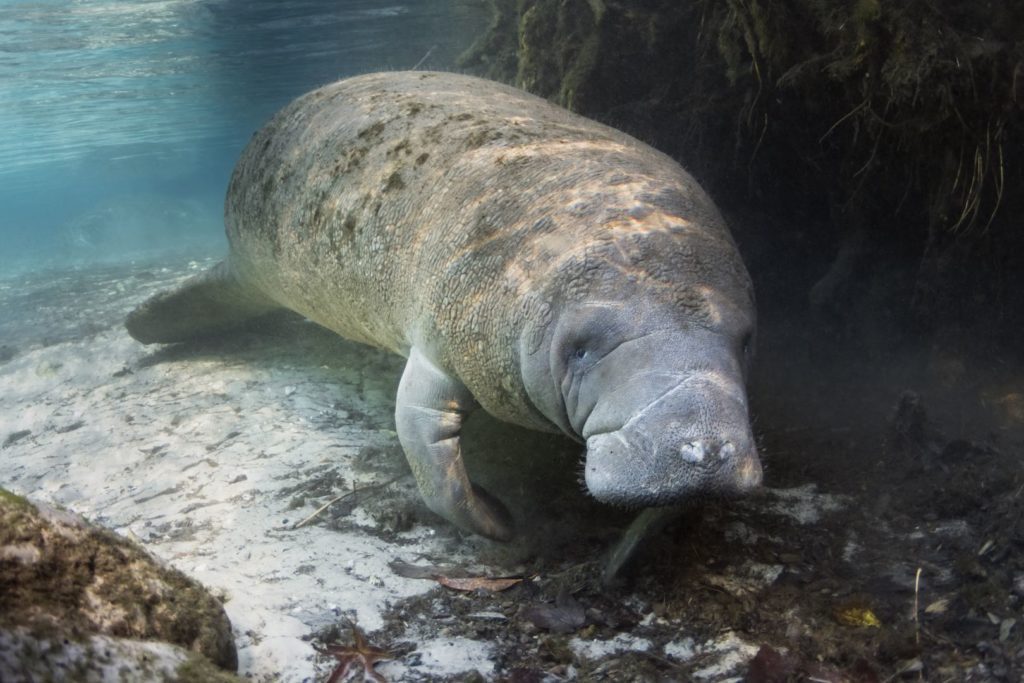
The flat-bottomed aluminium boats are designed for this one purpose in life and with engines gently ticking over, we gracefully puttered into Kings Bay. It was an educational and entertaining journey as our knowledgeable skipper and guide provided a non-stop monologue of facts, figures and anecdotes about the Crystal River, the geography and geology, the manatees and any other wildlife that came into view. Gliding past hundreds of pretty impressive shoreline properties with private moorings and busy marinas packed with expensive-looking pleasure boats, the prosperity of this area was in full view. So too was the main source of the wealth of the region – the natural environment that surrounded it.
After a couple of stops we finally pulled up outside a small inlet either side of which were some more substantial properties. It was still pretty dark and we were the only boat there. The skipper explained that this was one of the ‘hotspots’ for seeing manatees. While he went on to explain more detail about the source of this particular spring, the guide silently entered the water and swam towards the shore. A wave of the hand from the guide and the eight of us entered the water, excitedly but quietly as instructed, to join her.
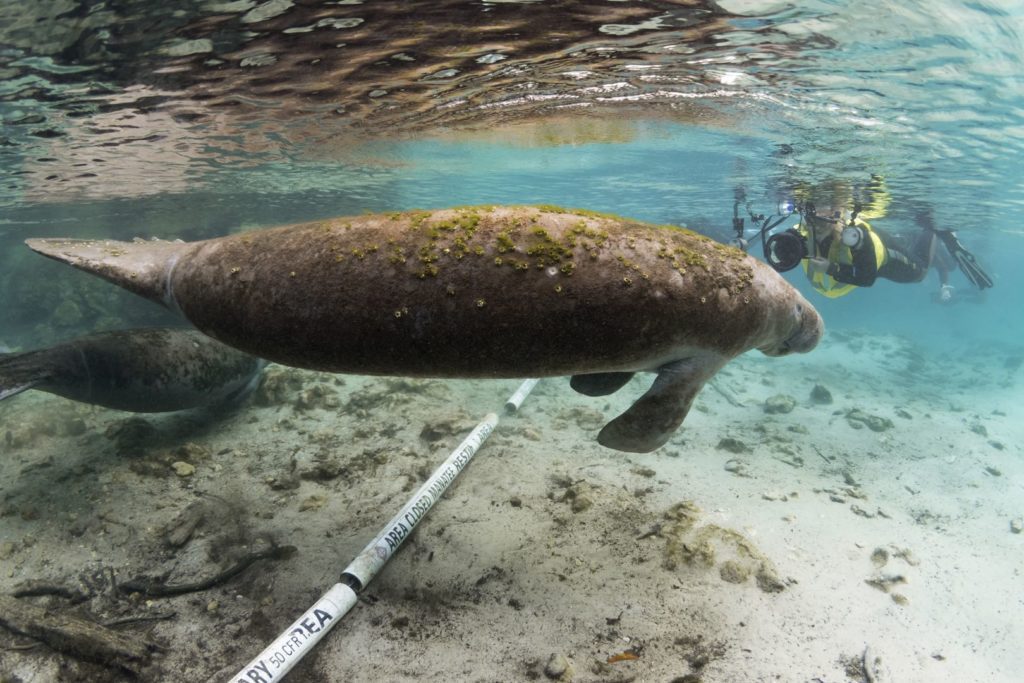
The sun had barely come up over the horizon and the residents of the houses that bordered both sides of the inlet had not even contemplated breakfast. The water was surprisingly murky and at 71 degrees F, might best be described as ‘refreshing’ in spite of the 5mm of neoprene. As we got closer to the shore, large grey objects covered in places with algae and shaped a bit like the London Gherkin building for want of a better description, could be seen lying still on the bottom.
Growing to up to ten feet in length and weighing over half a tonne when fully grown, these gentle giants are an impressive sight. As we swam over them the odd stream of bubbles would appear to be coming out of them, rising to the surface. Amusingly, we noticed that these did not come from the breathing end! Well, what did you expect? If you ate the equivalent of ten percent of your own body mass of marine vegetation every day, you would emit gas! This also accounts for their distinctive shape by the way – digesting that much greenery needs a large digestive tract.
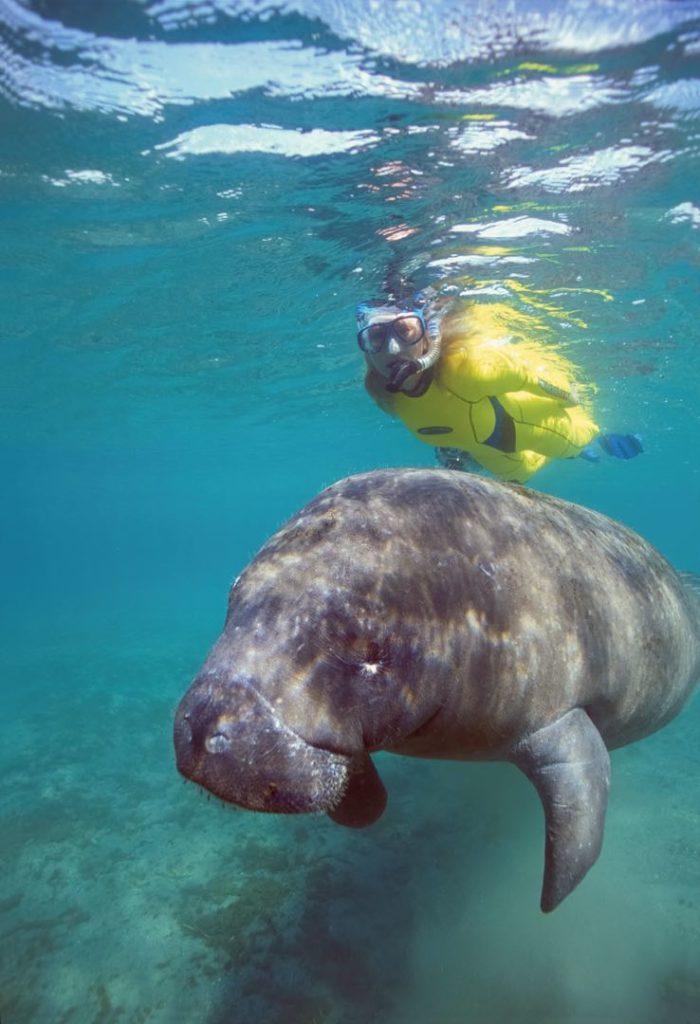
As the sunlight finally started to brighten the area, some of the manatees began to move, coming up for air, or taking the first of what would undoubtedly be many bites on the vegetation that covered the river bed. We hovered on the surface and watched in fascination. You’re not allowed to approach the manatees and need to keep a reasonable distance, but inquisitive young animals would often come quite close, wanting to interact. The desire to reach out and touch them was enormous, but as I watched, everyone resisted that temptation, kept their distance and ensured the animals had the space they needed when they decided they wanted to move.
After a while it became apparent that there were different-colored wetsuits swimming next to me and looking up, I could see there were now three more boats parked where ours was. The opportunity of getting a decent photograph without other people in shot had gone, but it really didn’t matter. To be honest, I was just happy to float around watching as these incredible animals went about their business, seemingly untroubled by their captivated audience and definitely not threatened.
After about two hours, I eventually got out of the water, not because my time was up, but because I was starting to get cold. Back on the boat I was offered a cup of hot water – not to drink, but to pour into my wetsuit to warm me up; it was a nice touch. The skipper was in no rush to get back and clearly had more stories to tell, and as we slowly cruised back, we continued to be entertained by the never-ending stream of information. The conversation among the passengers, including myself, was only about one thing – how amazing the whole experience had been.
I could leave this article there and thoroughly recommend that you all go and take the opportunity to swim with manatees if you get the chance. That would be my recommendation, by the way. However, recent events dictate that I can’t finish there. The manatee swimming experience business has generated a lot of controversy in the past, and the recent discovery of a manatee with the word ‘Trump’ scratched into the algae on the back of one animal is only likely to renew the criticism.
There are a number of people and organisations who argue that swimming tours should not be allowed, and that close interaction should be prohibited. I suspect that the local community that benefit from the millions of dollars generated every year by people coming to see them would disagree. So, too, would the hundreds of thousands of visitors who enjoy the ‘spiritual’ experience of what may be the only close up encounter with a large truly wild animal they are ever likely to have.
The problem is that sustainable conservation is a difficult and often conflicting three-way process. It is a delicate and complex balancing act between the needs of the environment, society and the economy. Every stakeholder in any situation will have their own interests, concerns and priorities and trying to please everyone is always going to be difficult, if not impossible. When I look at the manatee situation, I see an environmental phenomenon, a local community working together and most of the time in harmony. The manatees are essentially the source of a multi-million dollar industry that supports the local community and its economy.
Tour operators have a role to play as an educational and public engagement conduit, but they also act as environmental stewards providing a regulatory function which supports the more-formal park regulations and statute protecting the animals. Will it always work successfully? No. Will there inevitably be some individuals who transgress from the rules in place? Yes. Writing on the back on one of the manatees was despicable and disrespectful, but it was an incident that I am pretty certain didn’t happen during an organised tour and one that can, because of the regulation and protection measures in place, be investigated and the perpetrators potentially prosecuted.
The manatees have been in the area for thousands of years, but due to human development they have now become an urbanised wildlife species. Numbers have increased over recent years and, in 2017, they were reclassified from ‘endangered’ to ‘threatened’ under the Endangered Species Act, a clear indication of the success of protection efforts. The biggest danger they face at this time are not from snorkelers, but the high number of leisure boats in the area.
Like it or not, the fact is that neither the manatees, nor the people in whose backyards they now find themselves, are going anywhere soon – their lives are forever intertwined. Unfortunately, however, we have a pretty shocking record when it comes to interacting with the environment. Anthropogenic activities have contributed to the eventual extinction of far too many species of animals in the past and it is important that we adopt a precautionary approach moving forward with an emphasis on environmental protection.
Urban development in coastal regions is likely to increase rather than decrease, and the continued existence of the Florida manatee will be increasingly dependent on our conservation efforts in the years to come. That said, I believe that the opportunities that limited and regulated interactive experiences such as this provide can only serve to enhance those efforts, and I would urge you to grasp the opportunity if you get the chance to swim with them – I can guarantee that the little stream of bubbles they emit in the morning will put a smile on your face.
